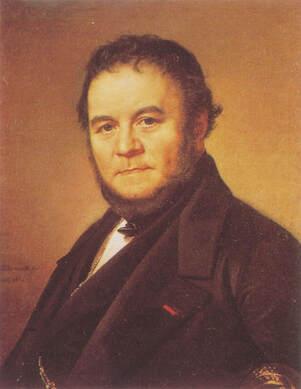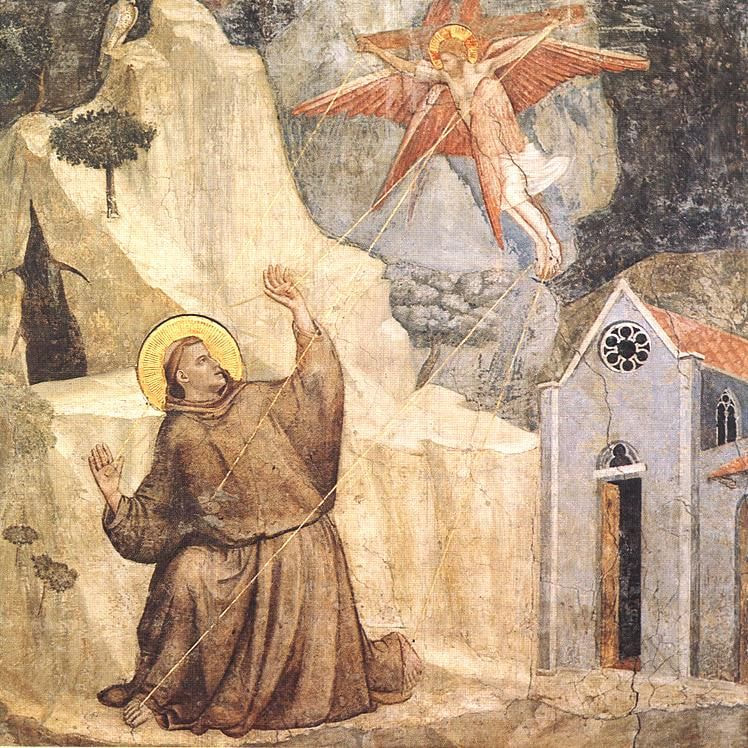"Stendhal's Syndrome"
Too Much of a Good Thing
Maybe you've heard about those "If It's Tuesday, This Must Be Belgium" tours, where you visit twelve important places in ten days. (Really!) And best of all, it costs so little!
But you can't remember what you saw, where you saw it, or why it was "important". When all is said and done, all you know for sure is that you've ended up exhausted, your head is spinning, and you're more than ready to go home. Here's why.
But you can't remember what you saw, where you saw it, or why it was "important". When all is said and done, all you know for sure is that you've ended up exhausted, your head is spinning, and you're more than ready to go home. Here's why.
|
Following his visit to Florence in 1817, the French writer Stendhal (author of The Red and the Black) described a response that he'd had there after viewing Giotto's frescoes in the Franciscan church of Santa Croce. This response has since come to be known as "Stendhal's Syndrome".
The symptoms of this psychosomatic condition are rapid heartbeat, dizziness, fainting, confusion, and even hallucinations when an individual is exposed to art, usually when the art is particularly beautiful, or a large amount of art is seen in a single place or within a brief period of time. The syndrome was "officially" named in 1979, when it was described by Italian psychiatrist Graziella Magherini. She'd personally observed and described more than 100 such cases among tourists in Florence. |
|
I first heard the term "Stendhal's Syndrome" several years before Dr. Magherini gave that name to the cluster of symptoms she'd observed. And I had heard a rather different story.
Several people had told me that when Stendhal had been in Florence, he tried taking in as much as he could of the Renaissance city's treasure trove of art. (He was especially enthralled with Giotto's "St. Francis Receives the Stigmata", in the Church of Santa Croce.) Then one day he simply disappeared from sight. After a week or so, his worried friends began searching for him, and finally they went to the room he was renting. And there they found him curled up on the floor in a corner of his room in a semi-catatonic state. As it turned out, Stendhal had seen and taken in too much beauty at too fast a pace! He was suffering from an overwhelming case of what we today generally call "sensory overload". |
This far more dramatic story is no doubt apocryphal. (It doesn't even include the cluster of medical symptoms that Stendhal himself described.) But I've never been able to erase this cautionary tale from my mind. And this is probably why years ago I updated the goals, practices, and name of my little company to "Italy Adagio" – Italy at a slower and easier pace. I imagine Stendhal would have appreciated it!


